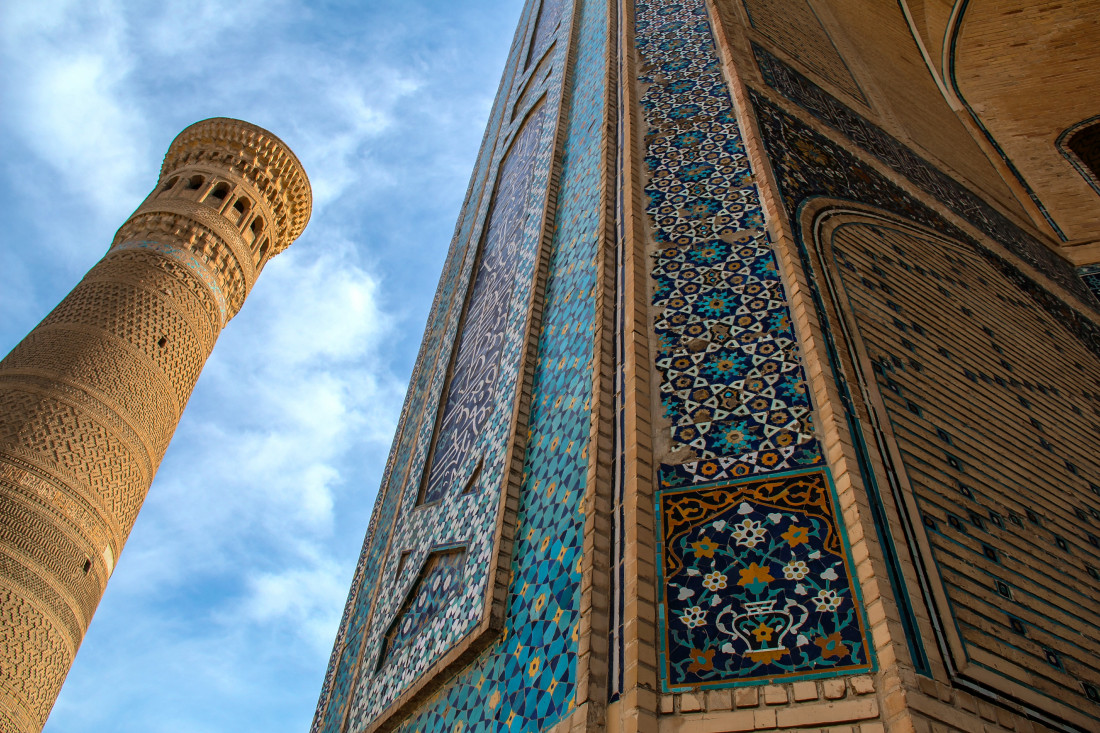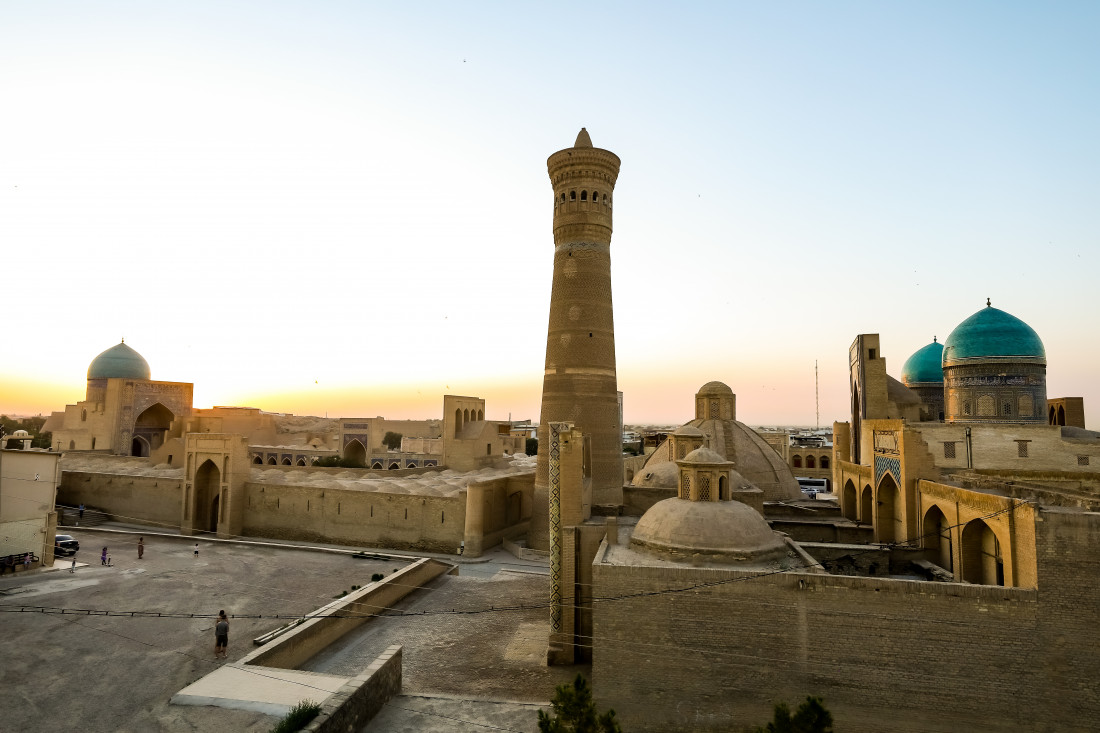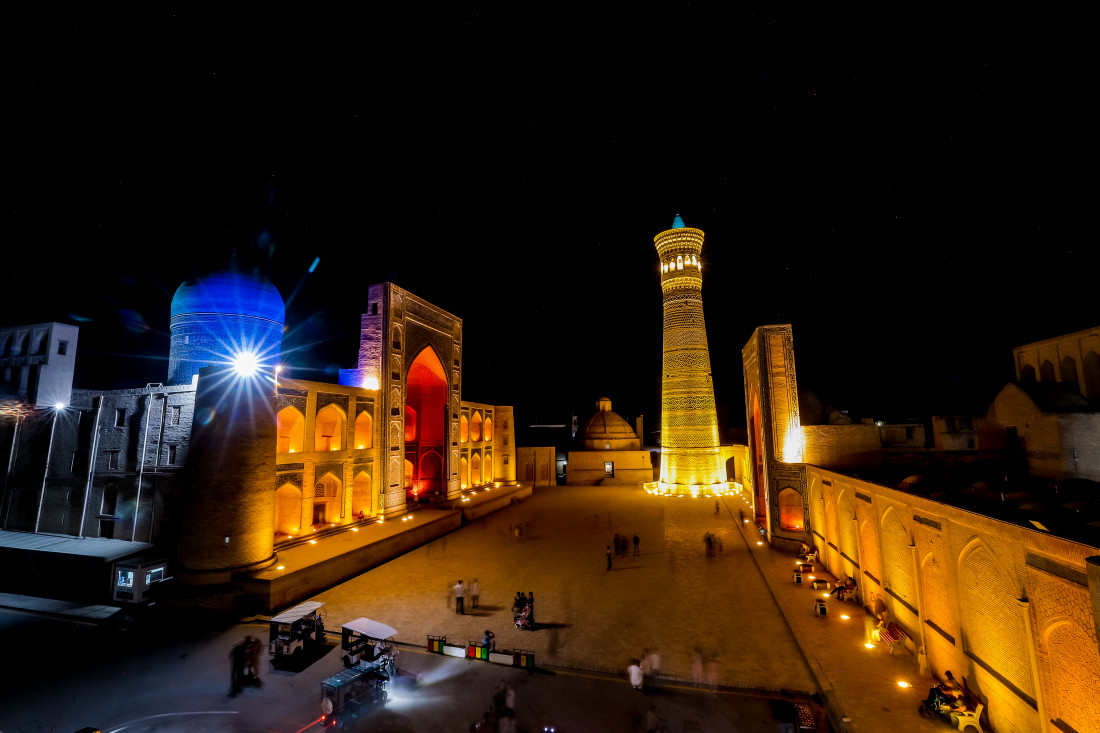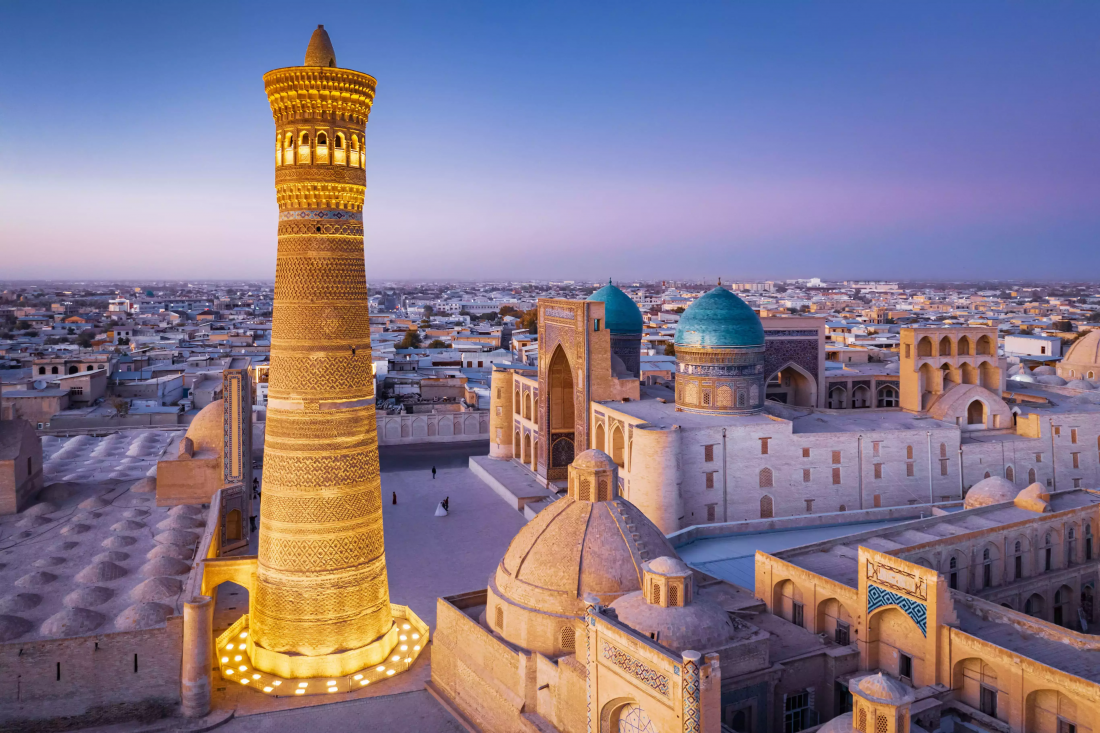Once after the conquest of Bukhara, Genghis Khan entered the main square of the city, he saw a grandiose minaret in the middle of the square. He looked up at the minaret and a helmet fell from his head. “I never bowed to anyone. But this building is so grandiose that it deserves a bow.” Thus, a unique monument and the main symbol of Bukhara, the Kalon minaret, was preserved. The minaret is part of the beautiful ensemble Poi-Kalon, located in the historical center of Bukhara. The minaret was built in 1127 by the ruler of the Karakhanid state Arslankhan.

The most beautiful building was built by a local architect named Bako. His name is immortalized on the top ledge of the minaret. There is a legend that many masters tried to build a tower of unprecedented beauty and height, but it constantly collapsed, and only a master named Bako found the necessary materials and managed to complete the construction of an ambitious structure. Today, the Kalon minaret is part of the Poi-Kalon architectural ensemble. In addition to the minaret, this includes the Kalon Cathedral Mosque (XV-XVI centuries) and the Miri-Arab Madrasah (XVI century).





At different times, the minaret served for different purposes. The main one was religious - to call the faithful Muslims to prayer. There was also a period in the history of the unique minaret when the tower was used as an execution tool for the condemned. Sometimes it was called the "Tower of Death". Often this tower was used to call on the people and announce important decisions of the rulers to them and also for observation, the observation deck provided surveillance over long distances, and sometimes even served as a beacon for wanderers who got lost in the desert. Today, the Minorai Kalon Minaret, which is part of the unified architectural ensemble Poi-Kalon, is included in the Representative List of the UNESCO World Heritage Site.
Workhours: 9:00-18:00, Mn-Fr
For any questions
ПОЛЬЗОВАТЕЛЬСКОЕ СОГЛАШЕНИЕ
1. Определение
Настоящее Пользовательское соглашение (далее — Соглашение) является Публичной офертой в соответствии со статьёй 367 Гражданского кодекса Республики Узбекистан от 21.12.1995 (https://lex.uz/ru/docs/111181#162763) и регулирует порядок использования материалов и Сервисов сайта Государственного унитарного предприятия «Национальный PR-центр» (далее — Предприятие), размещённого на веб-сайте и поддоменах Национального Туристического Информационного Центра: https://uzbekistan.travel/ (далее — Сайт).
Посетитель и (или) Пользователь подтверждает, что ознакомлен, полностью и безоговорочно принимает все условия настоящего Соглашения и обязуется их соблюдать.
Использование Сайта Пользователем означает полное принятие данного Соглашения «как есть» в форме акцепта.
Соглашение вступает в силу с момента посещения любой страницы Сайта и (или) регистрации на Сайте и действует бессрочно во время пользования Сервисами Сайта.
Настоящее Соглашение обязательно для исполнения всеми Посетителями и Пользователями без каких-либо изъятий и дополнительных согласований.
Пользователь обязуется самостоятельно проверять актуальную редакцию Соглашения на Сайте перед использованием Сервисов.
2. Предмет Соглашения
Предметом настоящего Соглашения являются правила использования материалов Сайта и предоставление Посетителю и (или) Пользователю возможности использования Сервисов Сайта.
Предприятие является правообладателем исключительных прав на Сайт в целом и на его составные части, включая все виды контента: логотипы, товарные знаки, тексты, статьи, аннотации, иллюстрации, фотографии, графику, аудио- и видеофайлы, пользовательские интерфейсы, дизайн, структуру, программы, базы данных.
Я прочитал(а) и соглашаюсь с условиями использования сайта и политикой конфиденциальности.
